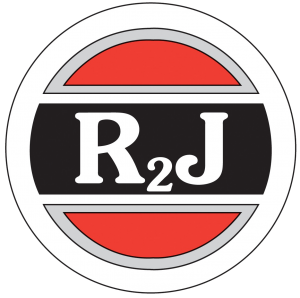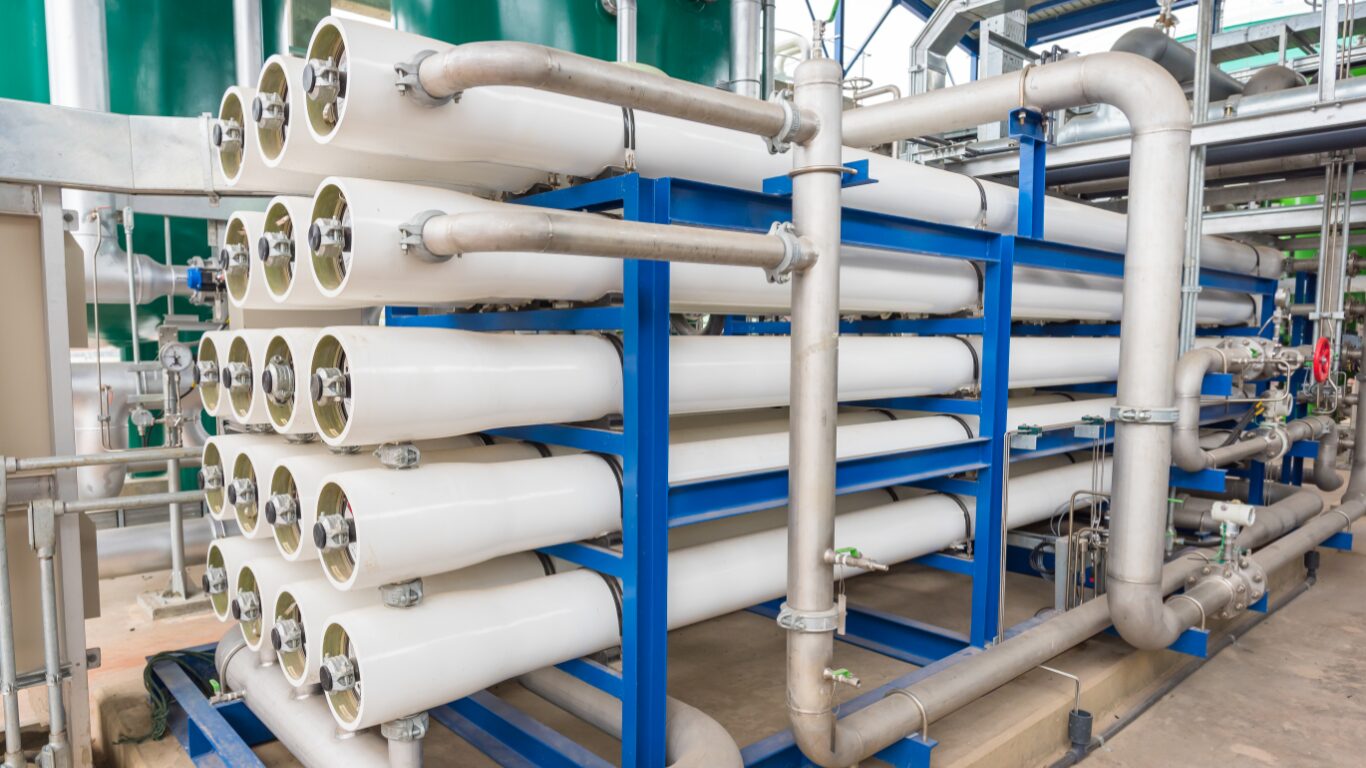Commercial Water Filtration System: How It Works
Jan 28, 2022Water quietly drives nearly every part of commercial and industrial operations. From cooling towers and ice machines to food preparation and beverage systems, the quality of that water directly affects performance, efficiency, and even safety. When impurities build up, whether from minerals, chlorine, or organic matter, they can shorten equipment life, alter taste, and increase maintenance costs.
Many facility managers only notice water problems once production slows or customers complain. But by then, scale buildup or corrosion has already started to damage systems. A reliable commercial water filtration system prevents those issues before they start, protecting both your equipment and your bottom line.
In this article, we’ll explore how a commercial water filtration system works, what technologies keep it running efficiently, and how you can ensure your facility consistently delivers clean, high-quality water across every application.
What Is a Commercial Water Filtration System?
A commercial water filtration system is designed to handle the higher demands of businesses that rely on steady volumes of clean water every day. Whether it’s a restaurant serving beverages, a hotel running laundry services, or a manufacturing plant cooling equipment, these systems ensure that the water entering your operation is free from harmful contaminants and suspended solids.
Unlike small-scale residential filters, commercial water filters are built for durability, capacity, and precision. They manage greater flow rates and tougher water conditions, often filtering thousands of gallons per day. Each setup is customized to match the facility’s water supply, usage patterns, and quality goals, sometimes using multiple filter stages or tanks to maintain consistent output.
At their core, these water filtration systems help businesses protect their investments. By keeping minerals, chlorine, and other impurities under control, they reduce downtime, extend equipment lifespan, and maintain the consistent water quality that customers and production lines depend on.
The Key Stages of Water Filtration
Every commercial water filtration system follows a similar process, moving water through several stages to remove different types of contaminants. Each stage plays a specific role in improving water quality, from catching visible particles to eliminating dissolved solids you can’t see.
1. Pre-filtration
This first step removes large particles like sediment, rust, and sand. It prevents clogging and protects downstream filters from early wear. In larger setups, multi tank parallel systems are often used to maintain high flow rates even during maintenance or cleaning.
2. Activated Carbon Filtration
Activated carbon targets chlorine, taste, and odor. It’s commonly used in hospitality and food applications where water directly affects product flavor, such as ice machines, coffee makers, or beverage dispensers.
3. Reverse Osmosis (RO)
Through a semi-permeable membrane, RO filters remove dissolved salts, heavy metals, and other impurities. It’s one of the most effective technologies for producing pure water suitable for industrial water filtration applications and beverage quality standards.
4. Post-Filtration or Polishing
In this final stage, specialized filter media fine-tune the result by removing any remaining particles or microorganisms. The goal is high quality water that meets the demands of sensitive equipment and critical industrial applications.
Understand how the right combination of filtration technologies can make a measurable difference in overall system performance.
Understanding the Core Components
Behind every commercial water filtration system is a network of components working together to produce consistent, clean water. Each part plays a specific role in maintaining pressure, directing flow, and ensuring contaminants are effectively removed.
1. Filters and Filter Media
Filters come in various types: cartridge, sand, carbon block, and multi-layered, each designed to capture specific impurities. The filter media inside determines how efficiently the system separates particles, minerals, and organic matter from the water supply. Selecting the right media blend helps balance efficiency and cost, especially for industrial applications that process large volumes daily.
2. Tanks and Valves
These control how water moves through the filtration system. In some industrial water filter system designs, multiple tanks operate in parallel to handle higher capacity and maintain steady flow rates. Valves manage the system’s direction and pressure, ensuring everything continues to function properly even during backwashing or regeneration cycles.
3. Pumps, Sensors, and Drains
Pumps drive water through each stage with the necessary pressure. Sensors monitor water quality and signal when filters need servicing or when flow starts to drop. Finally, drains remove waste, flushing out sediment and spent materials to keep the system clean and efficient.
Each of these components must work in harmony. When maintained correctly, they not only extend the life of the industrial water filter but also ensure that every gallon of treated water meets your operational standards.
Common Water Quality Challenges in Commercial Systems
Every facility faces its own set of water problems, often influenced by the water source and surrounding environment. Some issues are visible, like cloudy or discolored water, while others quietly harm systems over time. Understanding these challenges helps operators stay proactive rather than reactive.
Hard water is one of the most common issues. It contains high levels of calcium and magnesium that form scale buildup inside pipes, heaters, and cooling systems. Over time, this reduces efficiency and increases energy costs. Chlorine and hydrogen sulfide can cause taste and odor problems, especially in food and beverage operations. Iron, organic matter, and suspended solids lead to staining, clogged filters, or even corrosion if left unchecked.
These contaminants both affect taste and threaten your equipment and overall water quality. A properly designed industrial water filtration system tackles these issues by targeting impurities at the source. By keeping industrial water clean, facilities avoid downtime, extend equipment life, and maintain consistent output.
If you’re unsure how your current setup is handling these challenges, learn the early warning signs to spot issues before they become costly repairs.
Maintenance and Efficiency Tips
Here are some practical steps to maintain your system:
- Monitor service flow rates – A noticeable drop often signals clogged filters or scale buildup.
- Check pressure gauges regularly – Early signs of restriction or imbalance indicate your water filters need attention.
- Follow routine cleaning and replacement schedules – Replace cartridge and carbon filters according to manufacturer guidelines, or sooner if your water supply has high sediment, iron, or other contaminants.
- Keep a maintenance log – Track inspections, replacements, and any changes in water quality to catch developing issues before they affect production.
- Use automated monitoring tools for larger systems – These help track efficiency and alert teams when adjustments are needed.
The goal is simple: prevent problems before they happen, rather than reacting to them. A well-maintained system ensures high-quality water, protects equipment, and keeps your operations running smoothly.
For more guidance on improving performance and sustainability, check out our guide on Sustainable Water Treatment.
Choosing the Right Commercial Water Filtration Setup
No two facilities have identical water demands, which means there’s no one-size-fits-all solution when it comes to filtration. Choosing the right commercial water filtration system starts with understanding your water source, expected flow rates, and the specific contaminants you need to control.
For smaller operations, a compact setup using cartridge or carbon filters may be enough to maintain clean water for daily processes. Larger commercial and industrial applications, however, often require reverse osmosis systems or multi tank parallel systems that can handle continuous operation without sacrificing pressure or capacity.
When evaluating your setup, consider these essentials:
- Analyze your incoming water quality – test for minerals, chlorine, iron, and organic matter.
- Match filtration type to your process – carbon filters for taste and odor, RO for dissolved solids, sediment filters for particles.
- Check flow and pressure requirements – confirm your filtration system can sustain peak demand.
- Plan for maintenance – ensure filters and valves are accessible for quick service.
- Allow for future expansion – choose a modular system that can grow with your business.
The right setup doesn’t just meet today’s needs. It also supports long-term reliability, efficiency, and high quality water across all commercial applications.
Professional Support and Tailored Solutions
Even with the right design, a commercial water filtration system performs best when supported by expertise. Every facility has its own challenges: changes in water supply, seasonal shifts, or new equipment that affects flow and pressure. Having a trusted partner who understands these variables helps ensure your filtration system stays reliable year after year.
Regular inspections and water testing can uncover early warning signs such as reduced efficiency, uneven flow, or subtle taste and odor changes. Teams that track these details often prevent larger breakdowns before they happen. Whether it’s adjusting filter cycles, upgrading filter media, or optimizing reverse osmosis performance, professional guidance keeps your system operating at its full potential.
Not sure if your current setup is still meeting your facility’s needs? Let’s talk. Our team can help you review your system, improve treatment performance, and design a solution that delivers consistent, clean water for every part of your operation.
Frequently Asked Questions (FAQs)
What’s the difference between commercial and industrial water filters?
Commercial systems are designed for businesses like hotels, restaurants, and offices, while industrial water filters serve larger facilities with heavier flow rates and higher contaminant loads. Both aim to deliver clean water, but their capacity and construction differ.
How often should filters be replaced?
Most water filters need replacement every 6–12 months, depending on usage and water conditions. Facilities with hard water or high sediment may require more frequent maintenance to maintain high quality water.
Can reverse osmosis handle all contaminants?
Reverse osmosis removes most minerals, chemicals, and other impurities, but systems often include additional stages, like carbon or polishing filters, for complete purified water quality.
Can commercial systems use municipal or tap water?
Yes. Many commercial water filtration systems are connected to municipal water sources. Filtration improves taste, removes chlorine, and ensures safer tap water for food and beverages.
Are water filtration systems suitable for beverage and food applications?
Absolutely. Consistent water quali


